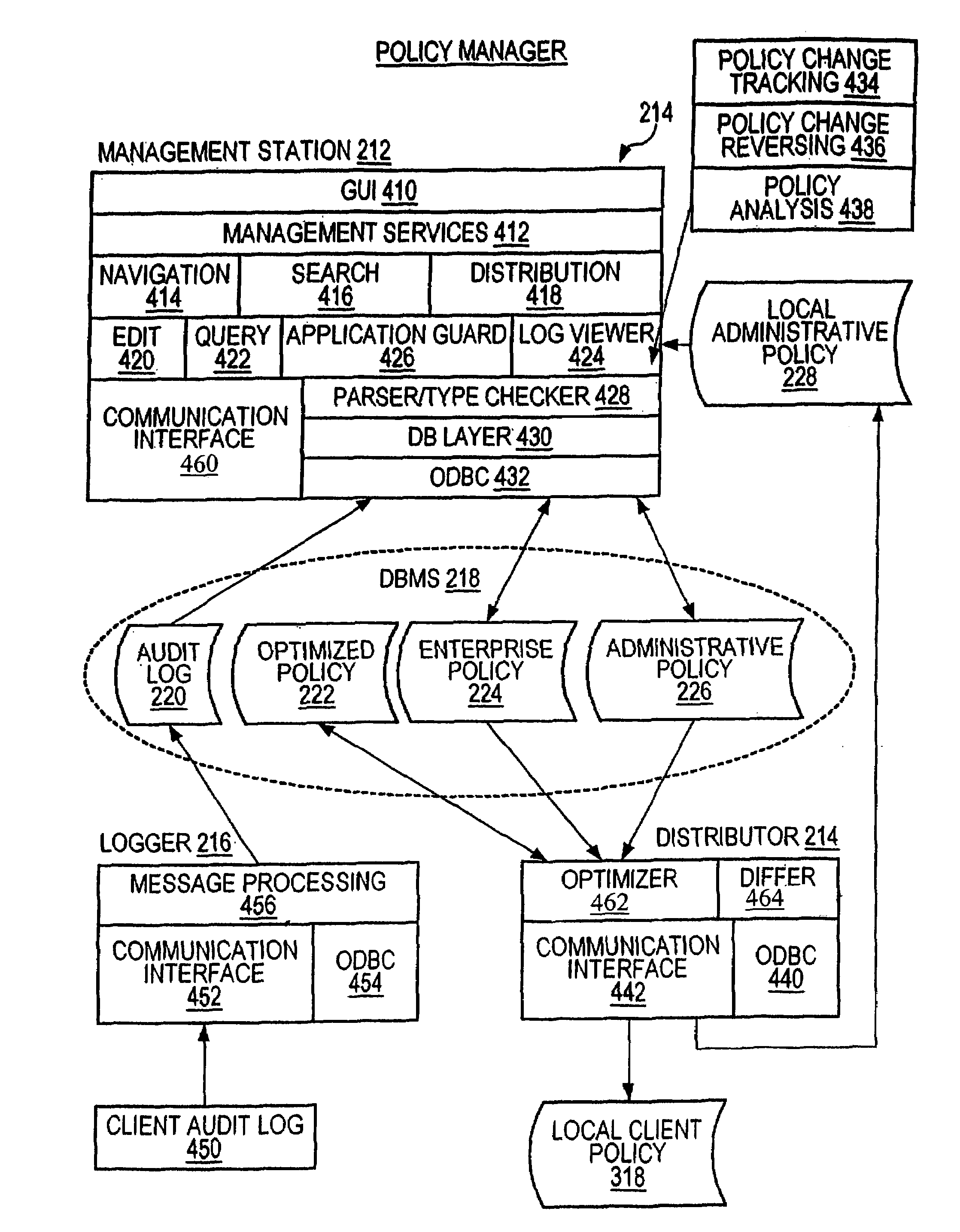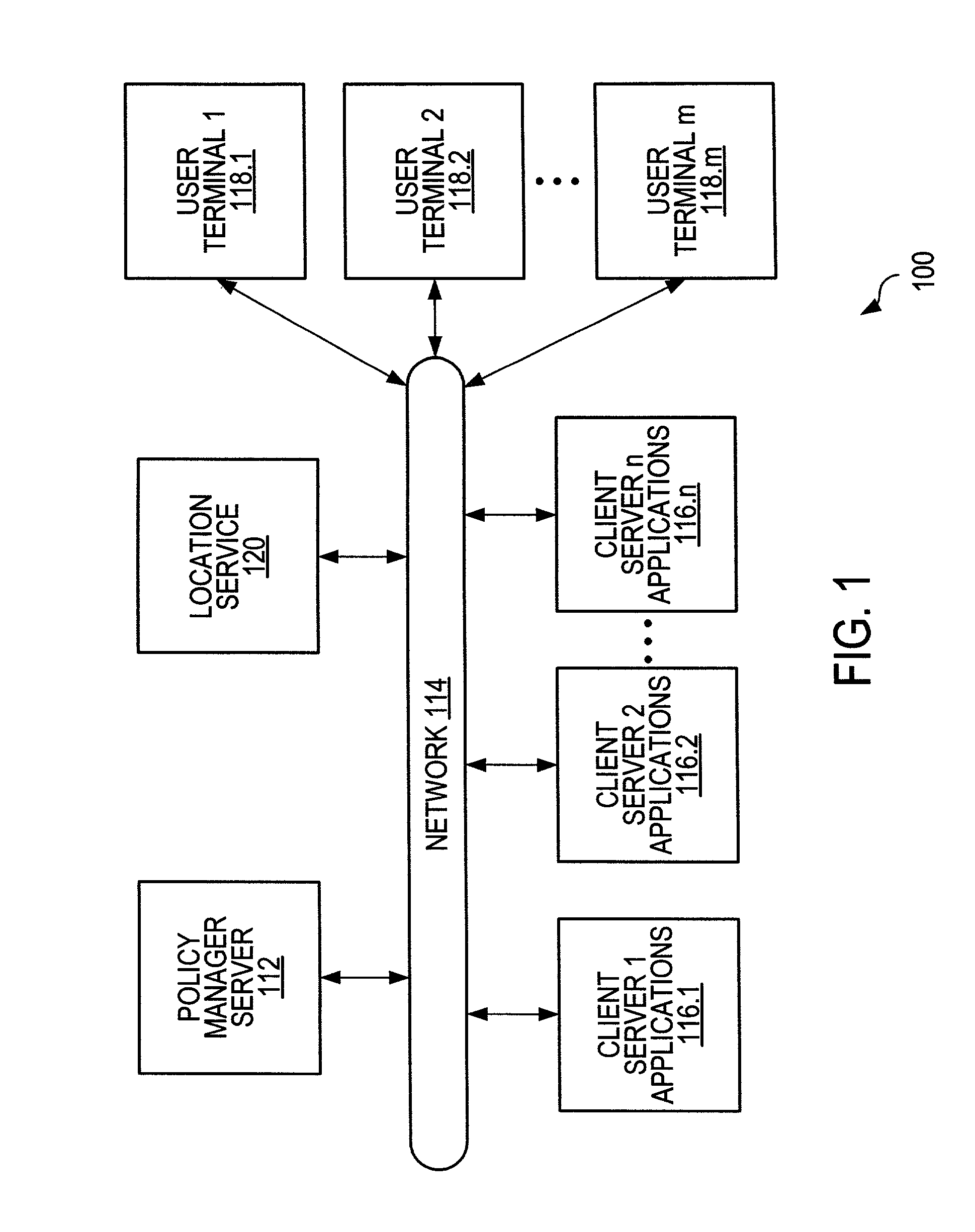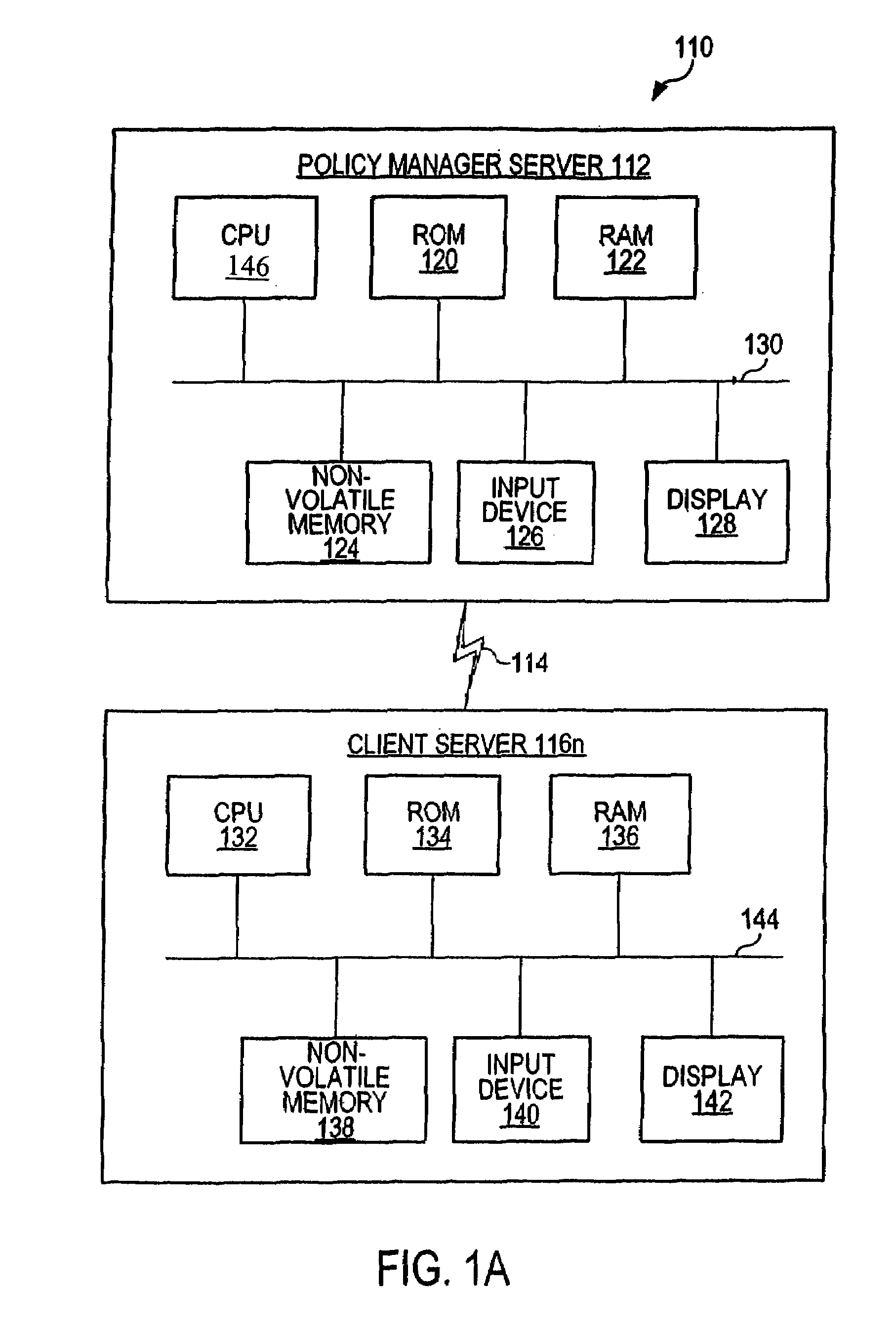System and method for maintaining security in a distributed computer network
a distributed computer network and security technology, applied in the field of computer security systems, can solve the problems of complex computer security issues, major hurdles, and complex access of employees, customers and partners to critical information assets, and achieve the effect of unlimited scalability and maximum performan
- Summary
- Abstract
- Description
- Claims
- Application Information
AI Technical Summary
Benefits of technology
Problems solved by technology
Method used
Image
Examples
Embodiment Construction
[0046]The present invention relates to an improvement in security techniques to protect computer systems against unauthorized access. The invention preferably includes a system and method for managing and enforcing complex security requirements in a distributed computer network, and comprises a policy manager located on a server for managing and distributing changes to a local client security policy based on a global security policy, and an application guard located on either a client or a client server, the application guard acting to grant or deny access to securable components, as specified by the local client security policy.
[0047]FIG. 1 is a block diagram of an exemplary network system 100 in accordance with the invention. System 100 comprises a policy manager server 112, n client servers 116.1, 116.2, . . . , through 116.n, m user terminals 118.1, 118.2, . . . , through 118.m, and a location service 120. The policy manager server 112, n client servers 118.1, 118.2, . . . , 118...
PUM
 Login to View More
Login to View More Abstract
Description
Claims
Application Information
 Login to View More
Login to View More - R&D
- Intellectual Property
- Life Sciences
- Materials
- Tech Scout
- Unparalleled Data Quality
- Higher Quality Content
- 60% Fewer Hallucinations
Browse by: Latest US Patents, China's latest patents, Technical Efficacy Thesaurus, Application Domain, Technology Topic, Popular Technical Reports.
© 2025 PatSnap. All rights reserved.Legal|Privacy policy|Modern Slavery Act Transparency Statement|Sitemap|About US| Contact US: help@patsnap.com



